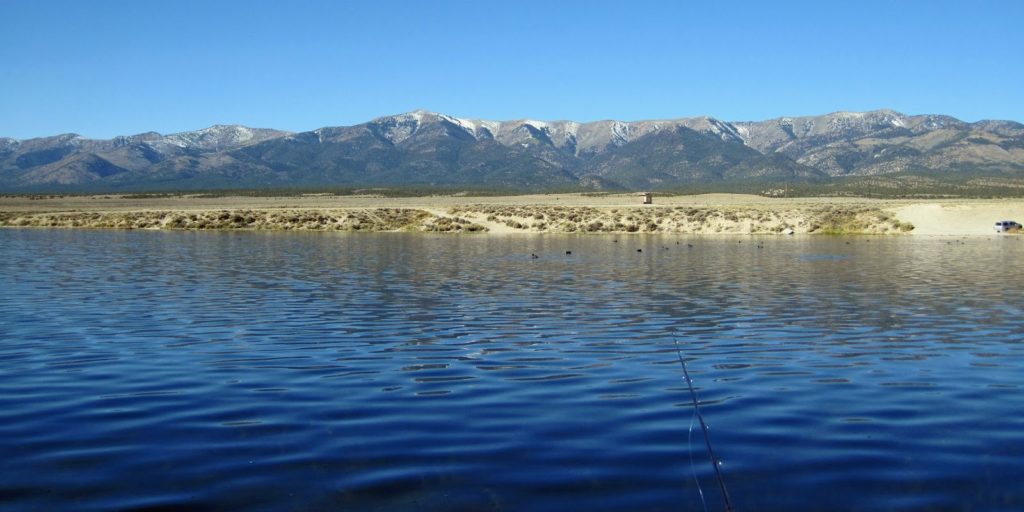
I would like to have written a title that exclaimed “Comins is Back,” but the truth is that while this fishing trip included a significant number of large trout, they were likely excess broodstock from the Gallagher Fish Hatchery in the Ruby Valley. Additionally, there’s the reality that 5 to 8 inch northern pike were discovered in the reservoir through Nevada Department of Wildlife (NDOW) electrofishing. If NDOW cannot eradicate the illegally introduced pike through electrofishing, they will undoubtedly grow, spawn, and feed such that the decimation of one of the State’s best trout fisheries will seem likely for the third time since I started fly fishing in 1977. While that may seem somber news, this Comins fishing trip can still be described as awesome; the “regular” trout stocking program has already begun to produce results that demonstrate this remarkable fishery that has the ability to grow trout by 1 to 2 inches per month.
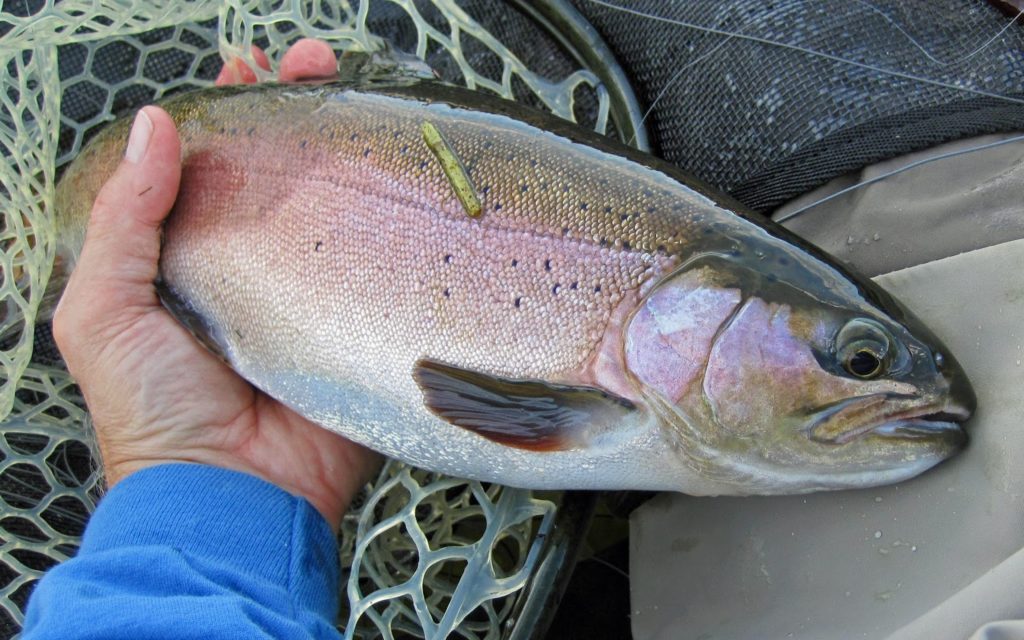
Comins is about 400 acres in size. Like most, if not all, of the State’s Wildlife Management Areas it was acquired through the purchase of ranch property, in this case from the 3-C Ranch in 1999. It’s less than 10 miles southeast of Ely, NV; you might say nestled at the bottom of Steptoe and Cave creeks. The typical Nevada panorama is evident here. From the alluvial plane you have the mountain vistas from which the Spaniards gave Nevada its name (Nevada translates to “snow-covered”). Massive Schell Creek Range rises in the east with Cleve Creek Baldy standing watch at 10,923 feet, and to the southwest the Egan Range and its 10,936 foot Ward Mountain watches over Steptoe Valley. But for the US Highway 93 traffic, you’d be hard pressed to find a more serene angling destination with world class potential.
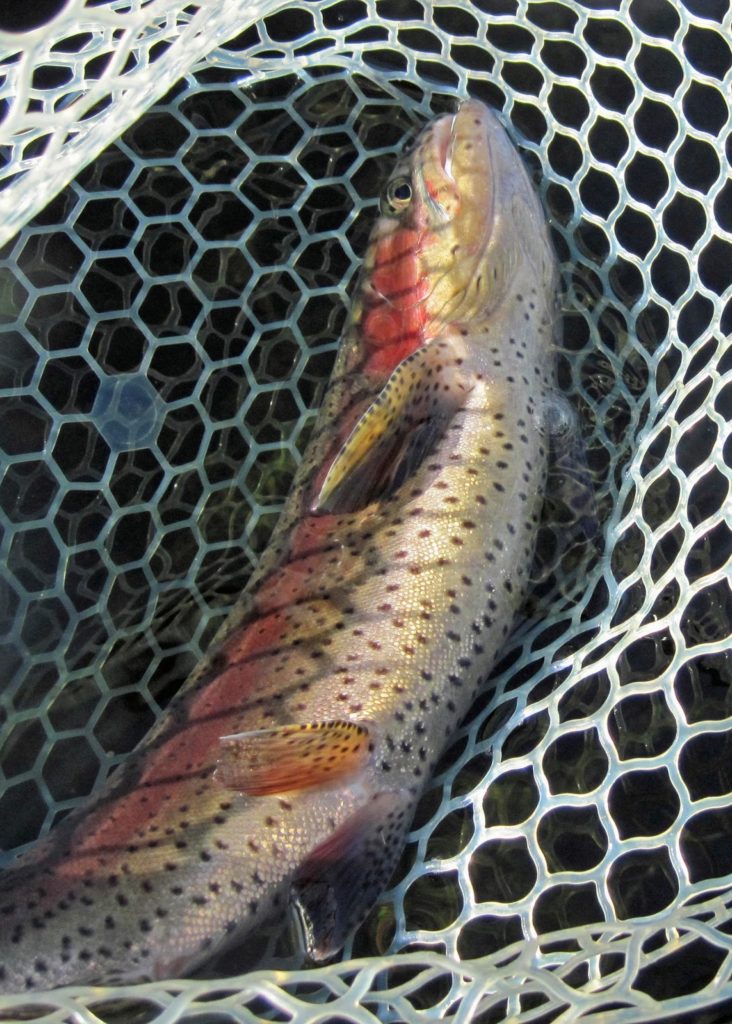
I am not a Comins expert. In fact, this was just my fifth visit. My prior trips were almost a decade ago when the trout fishery was booming from the 1989 pike eradication (see Ely, NV – Comins & Cave Lakes and Comins Reservoir – Ely, NV bogs). I believe pike were present then; there certainly were pictures of pike in every restaurant and gas station I did business with. By the early part of this decade the pike became so prevalent that they devoured all the planted trout. Once the trout disappeared the pike started eating smaller pike until all that was left was a stunted pike fishery. The trout anglers stopped fishing the reservoir. The fishery, and might I say an Ely “micro-economy,” disappeared.
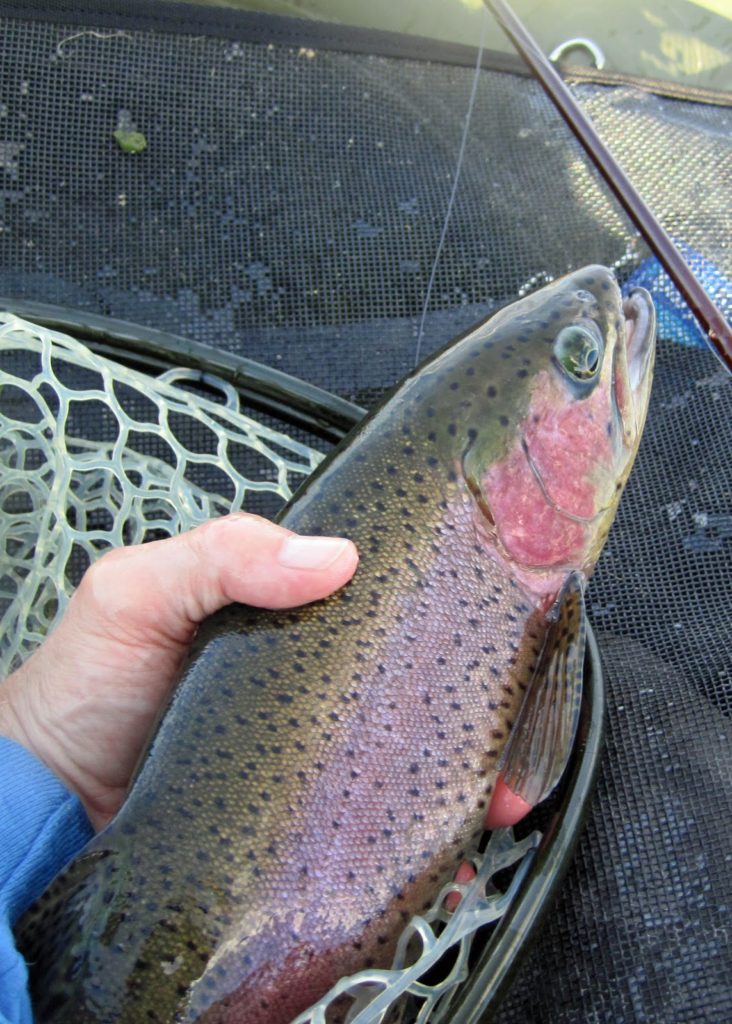
Most of us trout anglers read last spring’s reports that NDOW was restocking Comins after successfully removing the northern pike remnants. I believe they’ve stocked about 15,000 trout since March 2017. As evidence, my fly angling friend from Santa Barbara, Ron Wilmot, emailed me last July:
I fished Kirch for 10 days in early June then moved to Comins for 4 days. Fishing was amazing!!!!! On June 10, my 81st birthday, I quit at 3:45 with a sore arm. All rainbows from 15” – 21”. Fished a #14 beadhead P/T about 4’ under an indicator, cast out and twitched it in. The reservoir has returned to its original fishery after the eradication of the pike. Fished the weed beds on the west side way down by the last bathroom. No one but me and a guy from Long Beach, Ca. GO!
Ron Wilmot
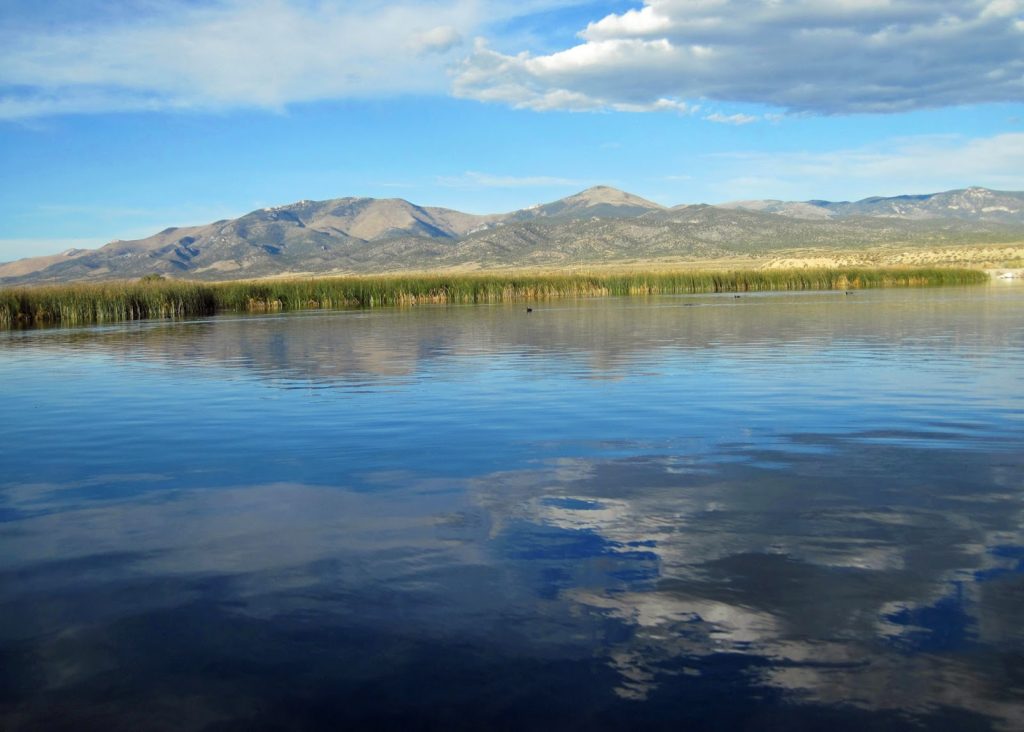
So, I’ve been waiting for the cool fall weather to try Comins myself, and my experience mirrored exactly what Ron wrote.
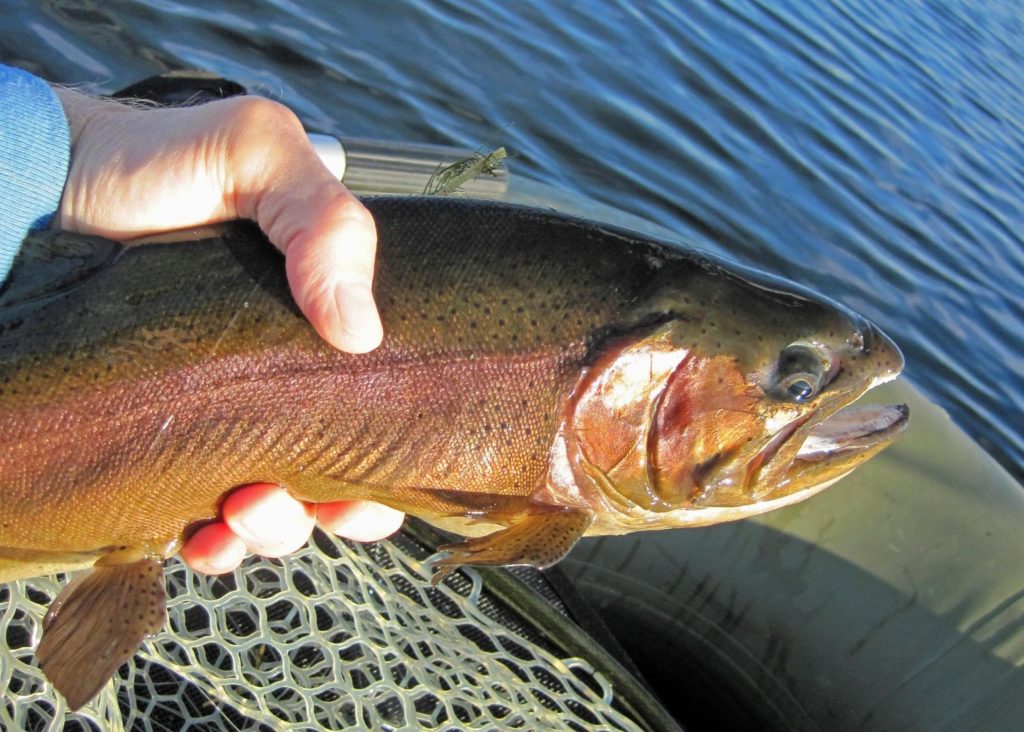
I had a business meeting Thursday morning, so I didn’t get on the road until noon. There was reconstruction work on US Highway 6, so I didn’t arrive at the reservoir until 4:30 pm. The temperature was in the low sixties; very comfortable. I fished from 5:00 pm to 7:00 pm, landing ten beautifully colored trout (as I’ve written before, these appear to be what the hatcheries refer to as Tasmanian rainbow trout – for more detail on Tasmanian trout read Comins Reservoir – Ely, NV – originating from the southern hemisphere where their solar cycle causes them to be fall rather than spring spawners). Five of them were in the 17 to 20 inch range. Although aware of Comins’ prodigious growth rates, I did not believe these could have been from the March stocking of 9-inch trout. In fact, several looked a little old to me.
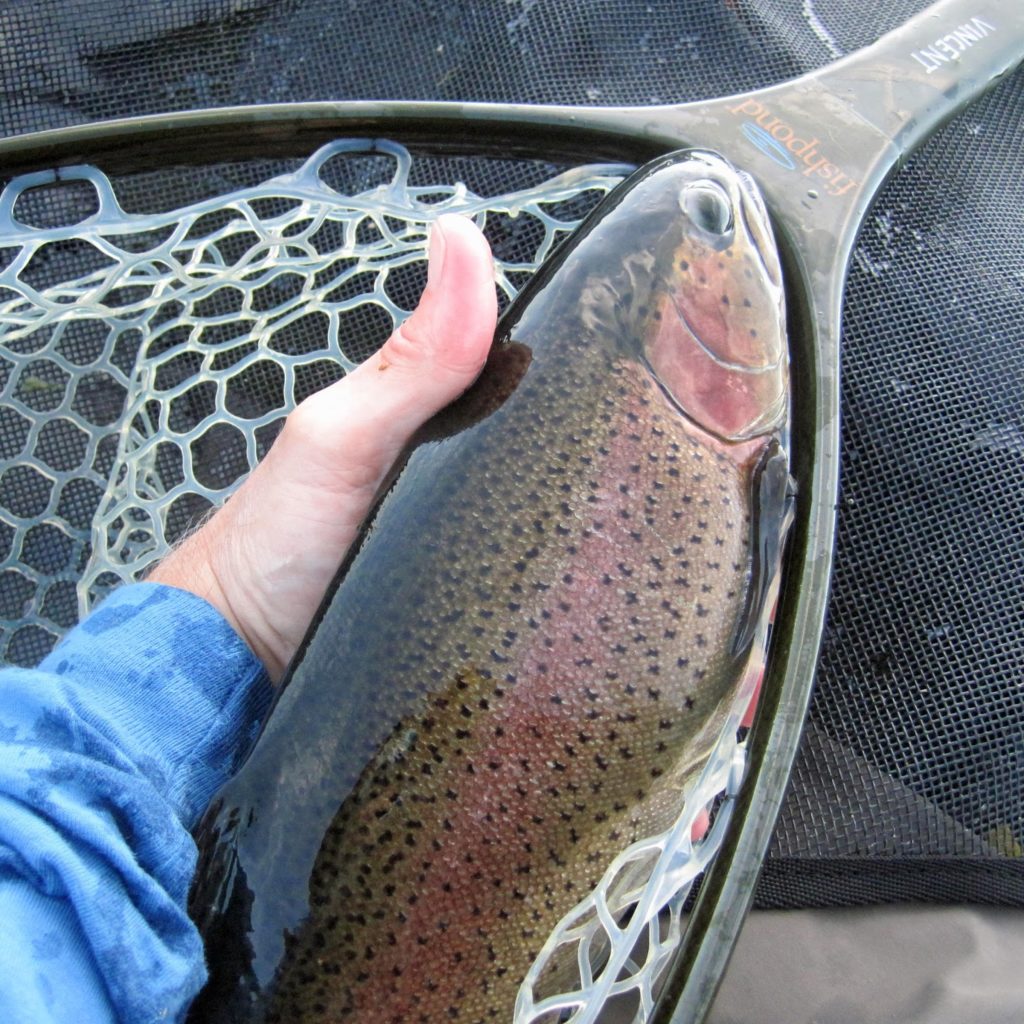
Remarkably I was the only angler on the reservoir. But as I was getting out of the water I noted a truck towing a boat to the launching area. I saw what I thought was an NDOW emblem on the truck, so I decided to drive over and see what was going on. I chatted with a NDOW warden (or maybe a fisheries biologist; I didn’t ask him) about the fishery. I told him that my two hours were better than I ever expected, but then I asked about the size of the trout. He admitted that Gallagher had some excess broodstock, and they decided to salt Comins with a bunch of them to quickly spike fishermen’s interest. Well, I told him it got my attention. He also confirmed that they had seen evidence of pike in the fishery, and that they were looking for more in that evening’s electrofishing procedure. He instructed me to kill any pike I caught and to drop off their carcasses at the Ely office of NDOW so that they could examine the evidence.
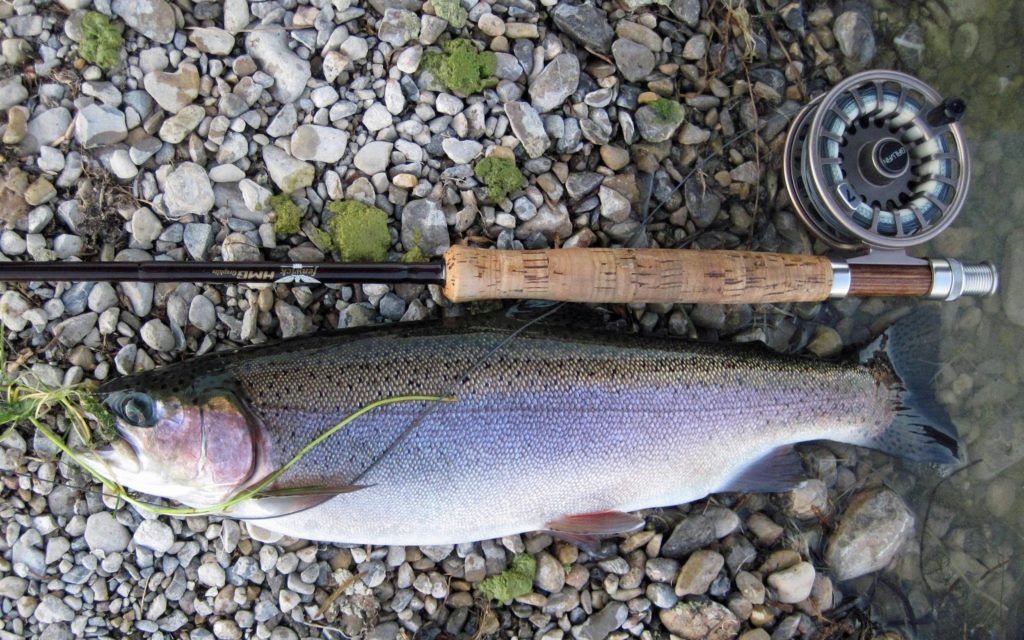
Friday I awoke at 6:00 am to a 37 degree temperature. After breakfast at the Silver State Cafe, I launched the Water Master on Comins by 7:00 am. I had taken Ron’s advice to fish the bulrush on the northwestern end of the reservoir where trucks zoom by on US Highway 93. By noon I was simply exhausted after landing 15 more trout, over half of them ranging from 17 to 21 inches. This time I did note a few stale eggs dropped on my apron which validated their Tasmanian heredity.
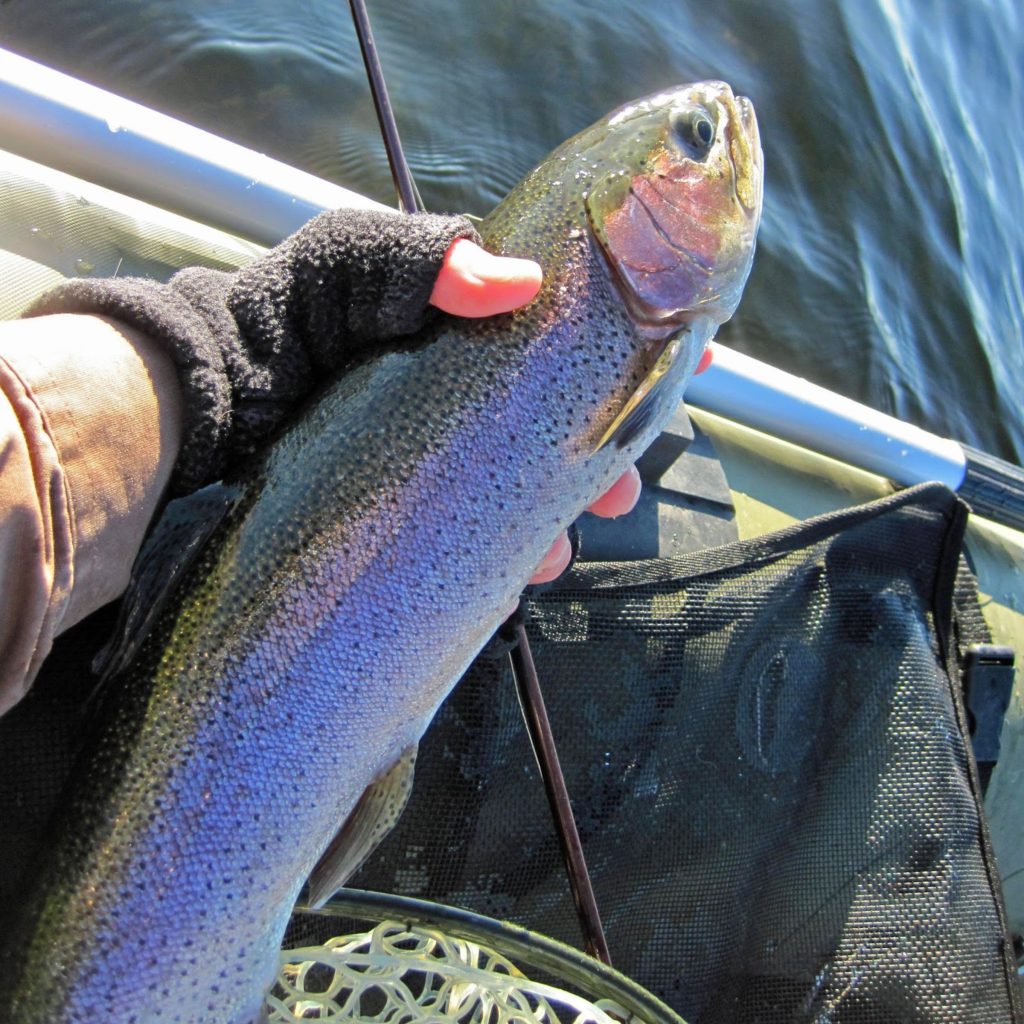
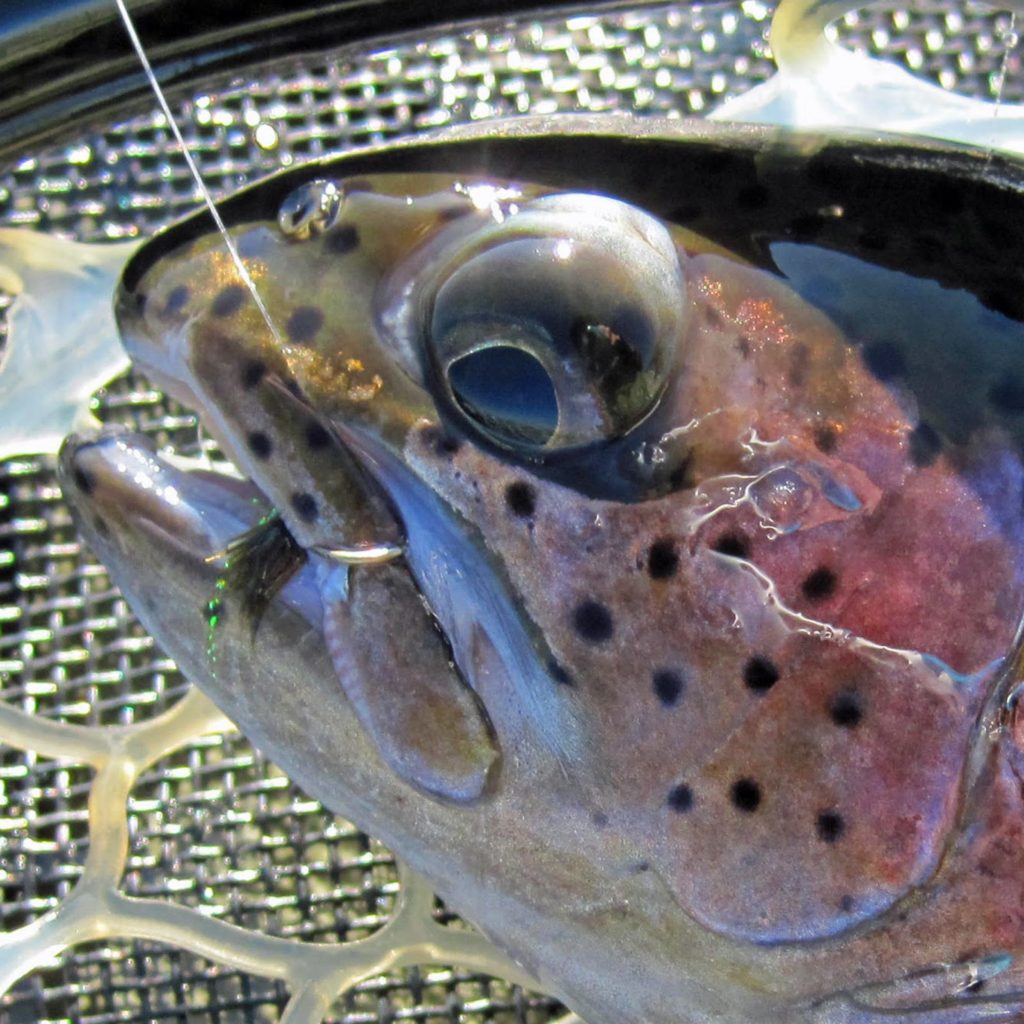
After excluding all the trout landed over 17 inches, on the premise they were excess Gallagher broodstock and not the normal 9-inch planters, I noticed an interesting pattern: half of those 10 trout were in the 14-17 inch range. That’s what I would expect from a normal Comins stocking back in March. If those trout can hold over through the winter, many could be young 20-inchers by late spring. To me, that’s a great indication of the Comins trout prognosis.
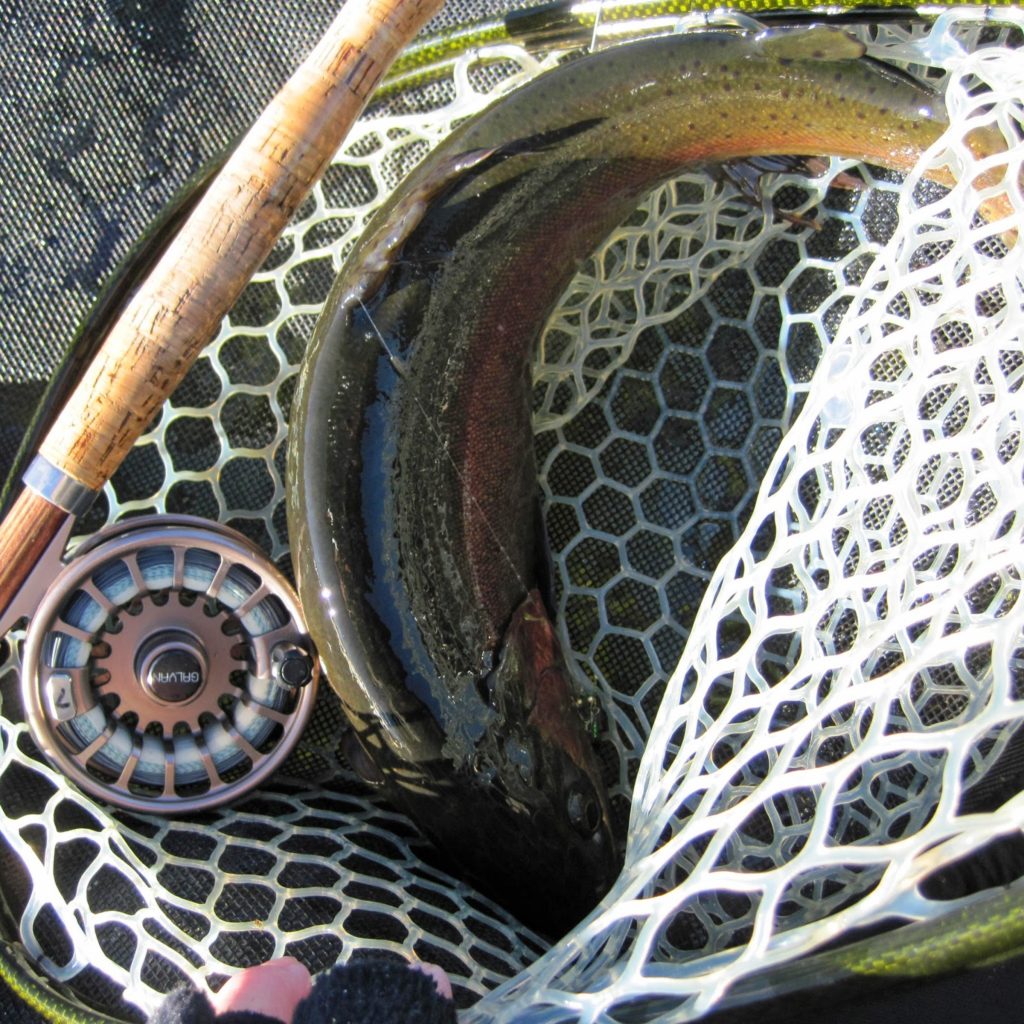

I made the below chart as a way to measure what I believe is the distinction between the normal 9-inch stocking program and the excess Gallagher broodstock. It recaps the results of my two-day, seven-hour fishing experience. I believe it does validate the remarkable growth rate in Comins, and foretells the success that Comins could experience. The athleticism of trout that spend a few seasons growing in the Comins fishery will far outclass that of the broodstock. By the way, I lost about 5 or 6 trout due to hook pull-outs despite the 5 – 6 lbs tippets, and I also caught 8 – 10 baby black bass with the largest being about 9 inches. As usual, all fish were released to grow larger and allow other anglers to experience.
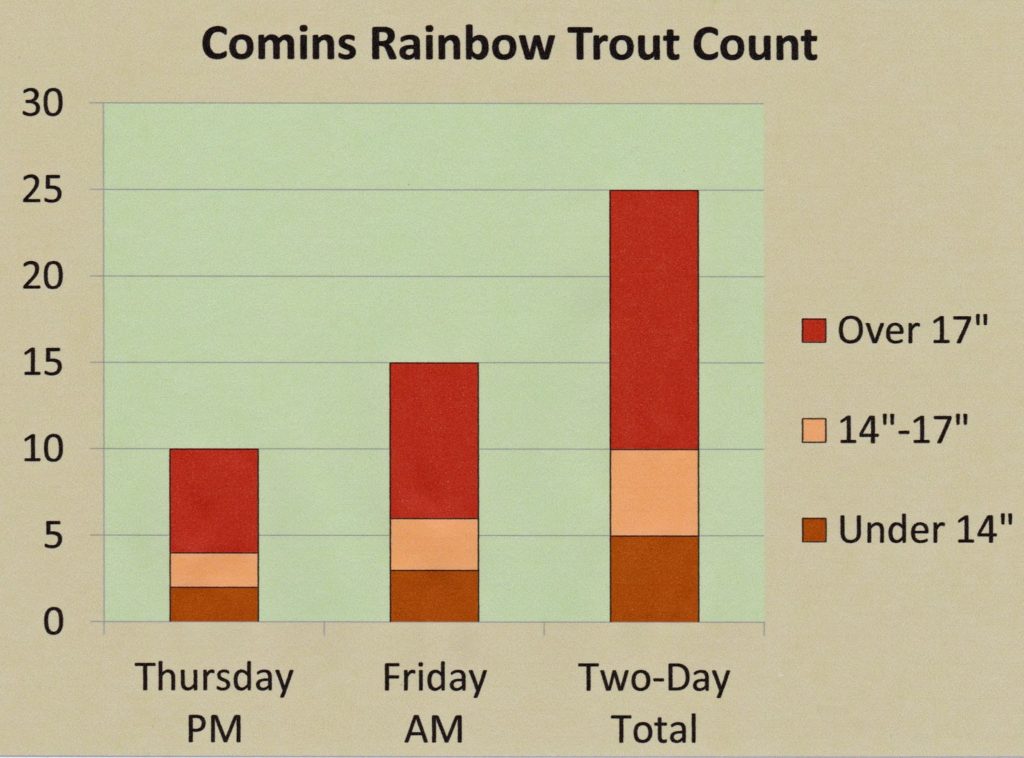
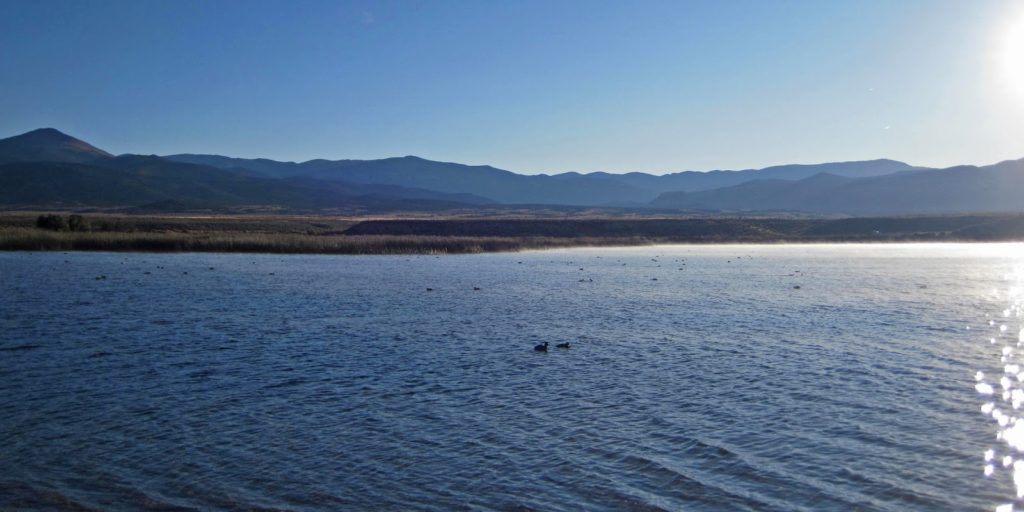
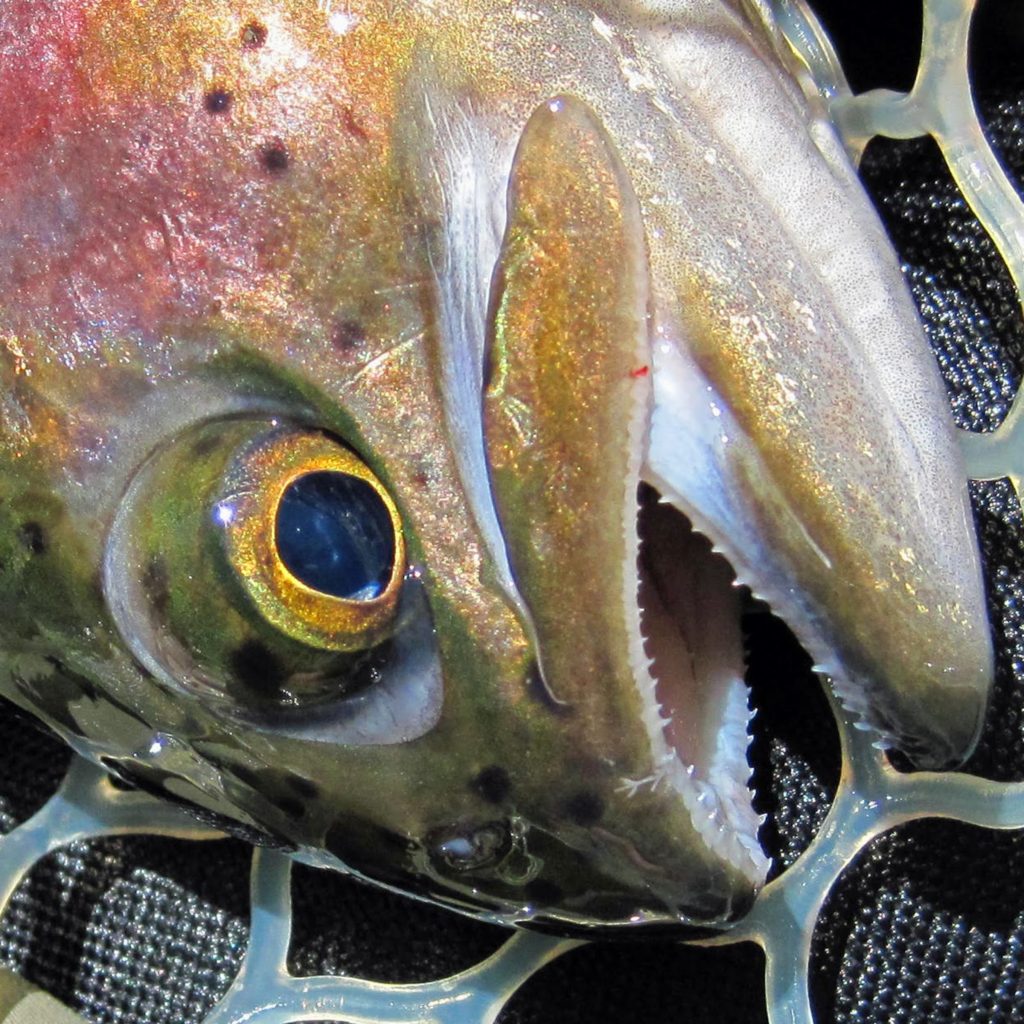
I must say that while the re-introduction of the pike is disappointing news, perhaps NDOW will be able to manage their population such that the trout fishery can return to its lofty status of years past. And I believe that a highly productive Comins trout and bass fishery will do more for the Ely economy than a northern pike fishery. So, next spring, as Ron simply advises, “GO!”
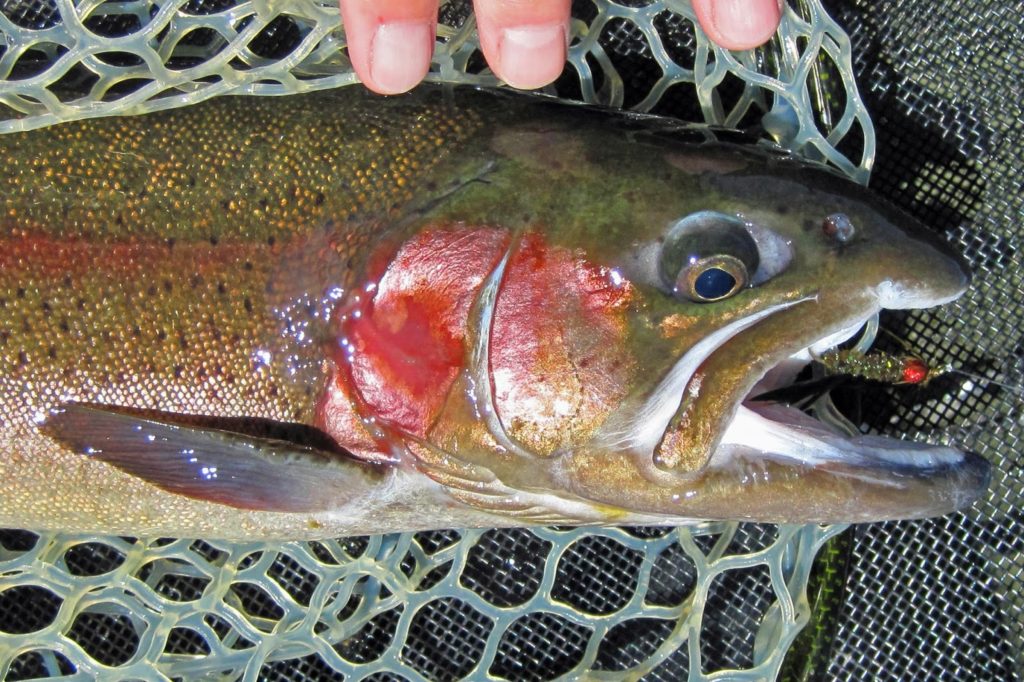
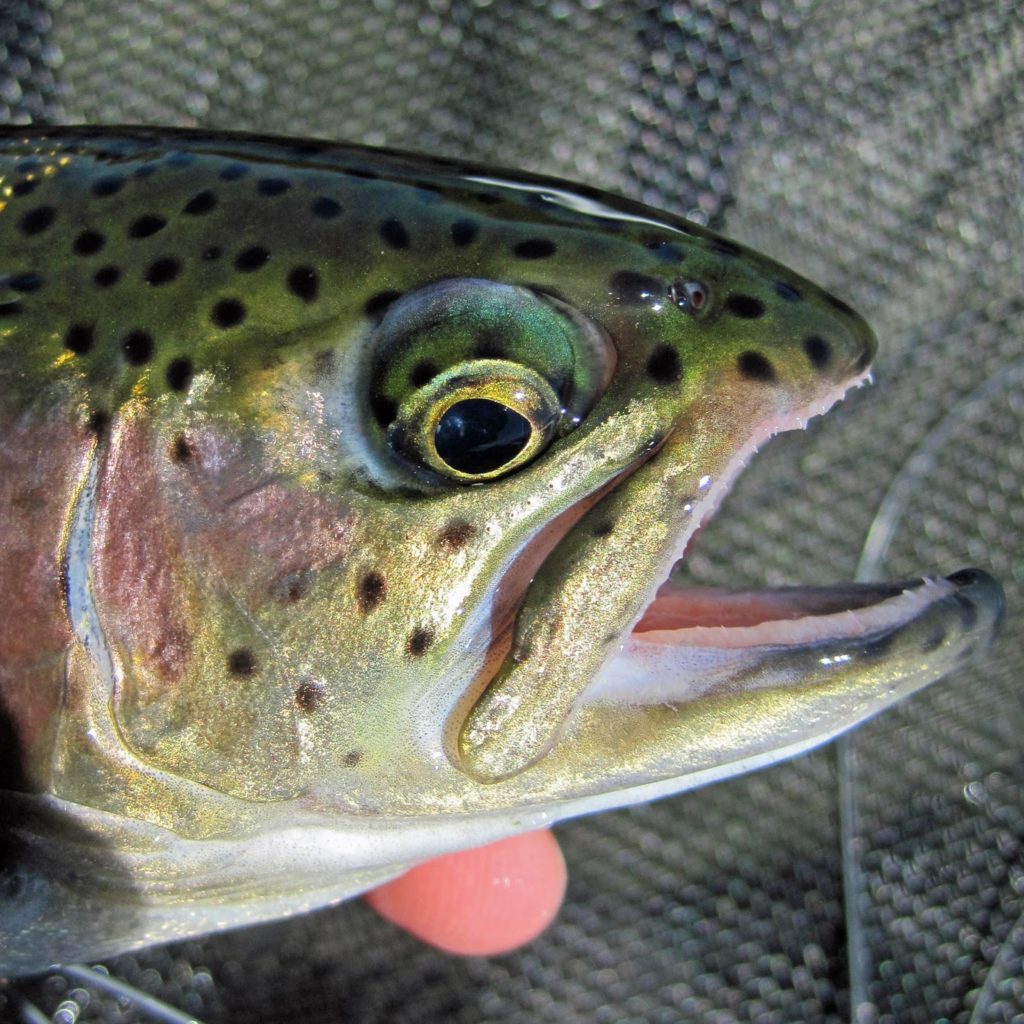
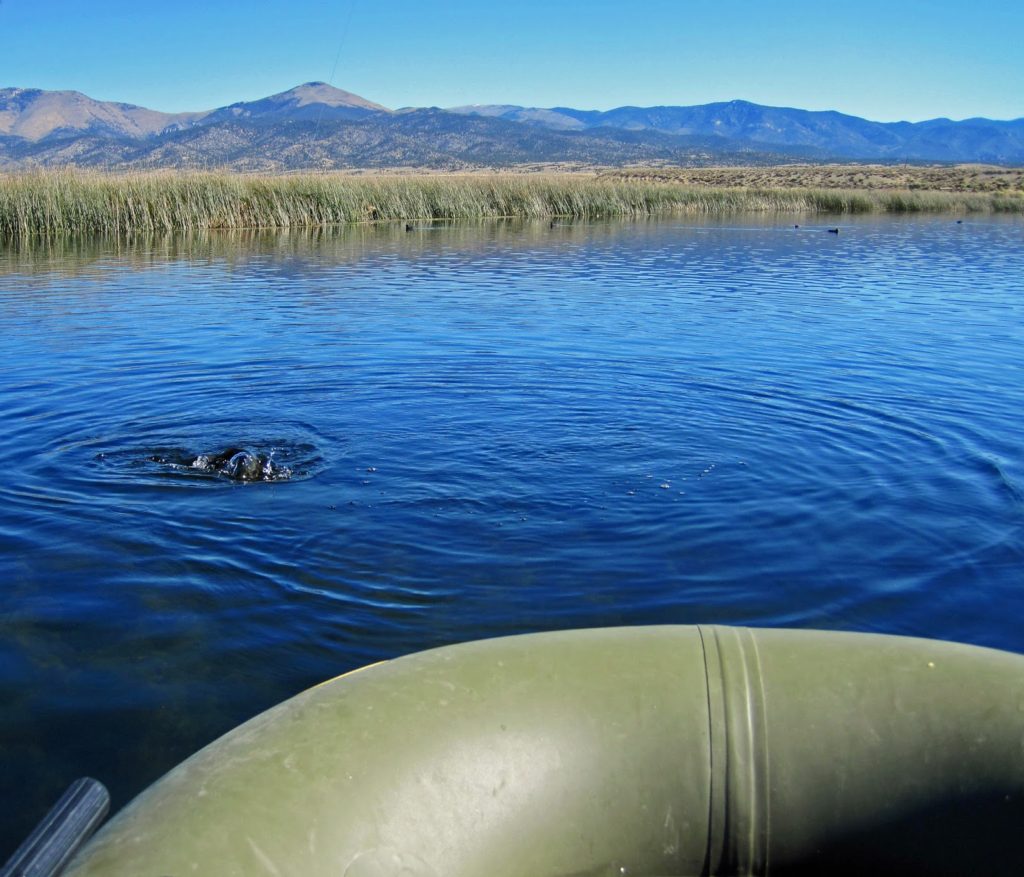

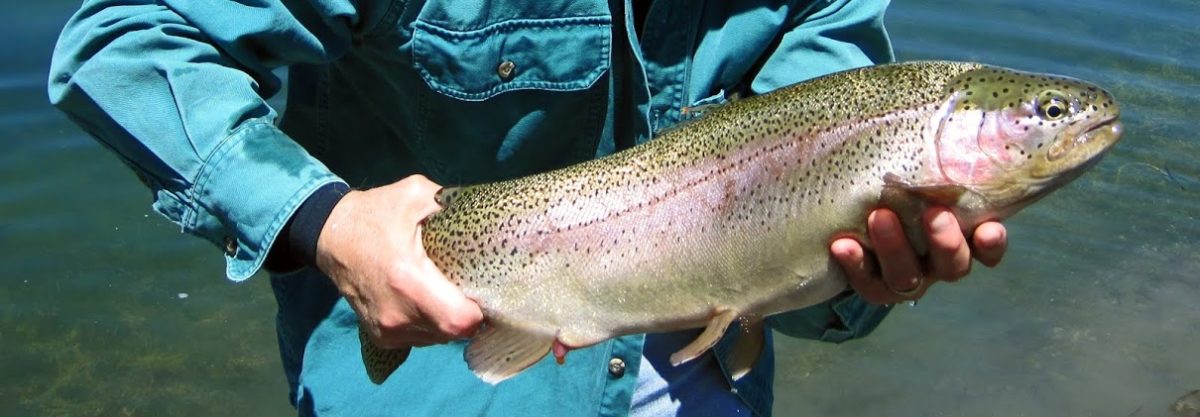
Your journals of your trips are always inspirational for me. I had to chuckle just a little when I saw the bar chart.
Hey Kathy, always great to hear from you. Hope all is well with you and the family.
The funny thing is that I decided to put the chart in the post partly to see who'd comment. I figured someone who knew my prior work history wouldn't be able to resist… and there you were!
I went to the City's fall picnic yesterday, my first as a retiree. It was nice visiting with many I haven't seen for 8 months (some I see routinely for social and business reasons). We brought Emily (now 8) and our grandson Atlas (20 months).
I saw Edward who has taken over the reigns in P&C, and Denise moved back as one of the appointive supervisors replacing Matt who went to PW. Candace then left P&C to take Denise's old job in Planing. It's good to see "good people" getting promotions.
Thank you for the post. Miss you.
Always enjoy your photos…..I have to chuckle whenever I read your trout blogs as it is a longstanding family funny story on how NO ONE in our family likes to eat trout!!!!
That is funny. So perhaps my penchant for “catch & release” appeals to your family (although I love salmon, I’m also not a big fan of eating the trout I catch in the Great Basin areas).
Trout/salmon (i.e., subfamily salmoninae) are interesting, complex, and beautiful fish. Their predominant food source is aquatic insects, although the marine salmon species and anadromous trout feed on smaller fish. Large landlocked trout do prey on smaller fish as well, but I digress.
Their array of species and subspecies boast an awesome mix of brilliant and wide-ranging color patterns (especially during pawning season). In my artist eyes, the word “beautiful” simply cannot describe them. Anyway, the point is that the trout species, and many of their salmon cousins, feed on insects in all stages of their nymph and adult lives, which makes fly fishing such a wonderful method to pursue them. The western North American species of rainbow trout are known for their leaping abilities which adds to their angling attraction (my brother Bruce once witnessed a 19-inch rainbow I was attempting to subdue that leaped 36-40 inches over my head while fishing Dacey Reservoir at Wayne Kirch WMA).
Their biological classification includes 8 genera (plural form of genus) under the subfamily salmoninae, and within those 8 genera are 121 species/subspecies (if I counted them correctly). The most commonly known by the general public are rainbow trout (oncorhynchus mykiss), brown trout (salmo trutta), and brook trout (salvelinus fontinalis). But each of these species has subspecies. For example, there are 15+ subspecies of rainbow trout such as Great Basin redband trout, McCloud River redband trout, Kern River redband trout, and golden trout. Another popular western species is the cutthroat trout (oncorhynchus clarkii) which has 15 subspecies of its own, 2 of which are native to Nevada. As far as I know, I believe I’ve caught 5 of the 121 species/subspecies (likely more), including Lahontan cutthroat (i,e., oncorhynchus clarkii henshawi).
And yes, I’m sure this is more than you ever wanted to know about the trout that you don’t like to eat… LOL
BTW, Miss Anonymous, it might interest you to know that there are two trout species unique to Arizona. Apache trout (oncorhynchus apache) can be found in the streams of the White Mountains. Gila trout (oncorhynchus gilae) can be found in streams within the Gila National Forest (western New Mexico), but historically they were found in the Verde and Agua Fria drainages in Arizona.
And, it might amuse someone you know that Sunapee trout (salvelinus alpinus oquassa) is a New Hampshire native related to the Arctic char (salvelinus alpinus). Char is the common name for the genus salvelinus under the subfamily salmoninae.
The easy way to distinguish between trout and char is that trout have dark spots on lighter colored sides while char have light spots on darker colored sides (generally). To see the difference copy this link into your browser: https://en.wikipedia.org/wiki/Trout